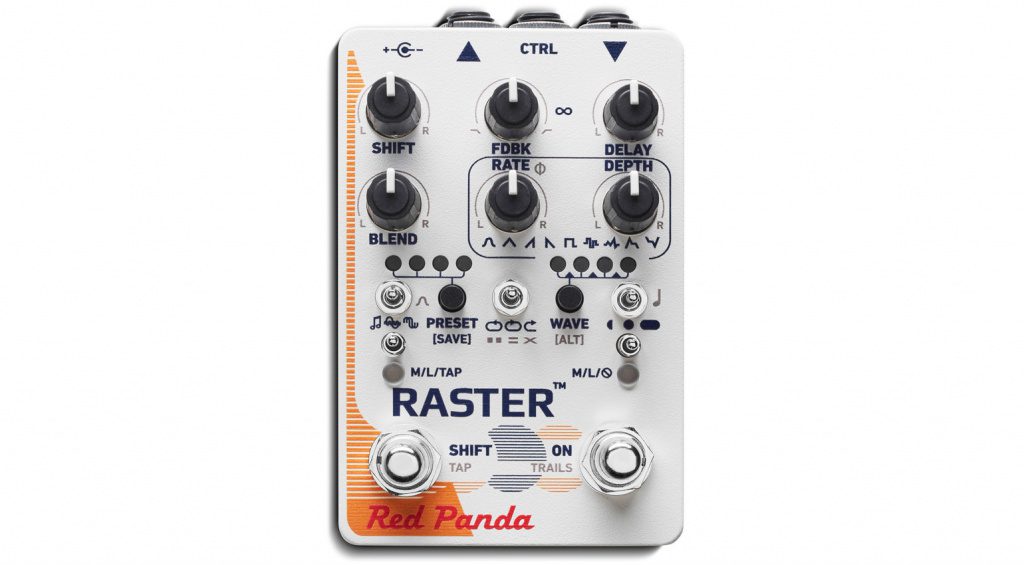

There was a discussion on TGP where a guy who brought this aspect up was collectively ostracised, but I feel it’s definitely worth mentioning, esp. The name is traditionalistic to a point of being unfortunate too.
#Red panda raster 2 manual serial
There’s no real control over delays apart from divisions, even a simple SERIAL mode is missing. As you can probably tell from the board, I’m a big fan of Red Panda and delay. First things first, chain is: Aqua puss > Hedra > SSBS Mini > Golden Boy > VPJR > HX > HX effects loop out > Ottobit > Particle > Echosystem > Context > Raster > HX. You pack a modern system on chip, an OS, only to do this tone-shaping monster? I fail to understand this. Hi, I’m the guy who yells about the Context v2 whenever someone asks on here what reverb to get. So despite its looks and mojo, LVX is a very traditional unit in the end, and messy too. In h/w department something like Empress Echosystem or EQD’s Disaster Sr are miles ahead in terms of actual DELAY control and playability, while in s/w even a Logic’s buil-in ‘multitap delay’ plugin is a monster compared to this. All its array of options are actually multi-FX addons, focusing on TONAL shaping rather than STRUCTURAL control. Would be much more logical to organise it in pages for each section, ala Elektron, in 2x3 matrix with encoders for each item. Text mode is better but still lacks in usability. This thing’s crazy and watching a demo would be better than reading my poor explanation above.UI is not just ugly but plain tragic. It allows for manipulation of delay time, pitch shift, and volume, with the different waveforms and envelope filters.

Where it differs from the Hedra is the waveform functions, the frequency shifting, and the envelope functions. It definitely allows a lot more creativity, so whilst less traditionally musical I’ve found it to be more inspiring. This has a lot of crossover with the Hedra, giving pitch shifted delays, but with a lot less… precision? The Hedra typically works on set intervals, whereas the Raster is more of a linear scale that you have to dial in yourself by ear. I’ve found the reverse delay and single shift mode a lot more musical and easy to use. The continuous forward delay (where it takes your signal and shifts it in pitch or frequency, then shifts the delay again, and again, and again…) does a great Rainbow Machine impression and gets weird pretty quickly. It does a pretty fantastic sounding digital delay out of the box, which can even do a decent analog delay impression with the low pass filter and modulation. As with pretty much every RP pedal, you can make something pretty tame but great sounding straight out of the box, it’s when you starting messing with the alt functions and, with this pedal, the shift footswitch that you start to get a little crazy.

I’m an idiot, essentially.ĭidn’t get to use it at the gig, but I’ve spent most of the day playing around with it and have somewhat scratched the surface. I wired this in last night prior to a gig, obviously then spent the next hour trying to figure out why I wasn’t getting any sound out, until I realised I had put the input in the output and vice versa. 1) Align the mark (red dot) on the projection lens with the mark (red dot) on the projector, and insert it all the way in. Hi, I’m the guy who yells about the Context v2 whenever someone asks on here what reverb to get.įirst things first, chain is: Aqua puss > Hedra > SSBS Mini > Golden Boy > VPJR > HX > HX effects loop out > Ottobit > Particle > Echosystem > Context > Raster > HXĪs you can probably tell from the board, I’m a big fan of Red Panda and delay pedals, so this was pretty much a must buy from the moment they announced it.


 0 kommentar(er)
0 kommentar(er)
